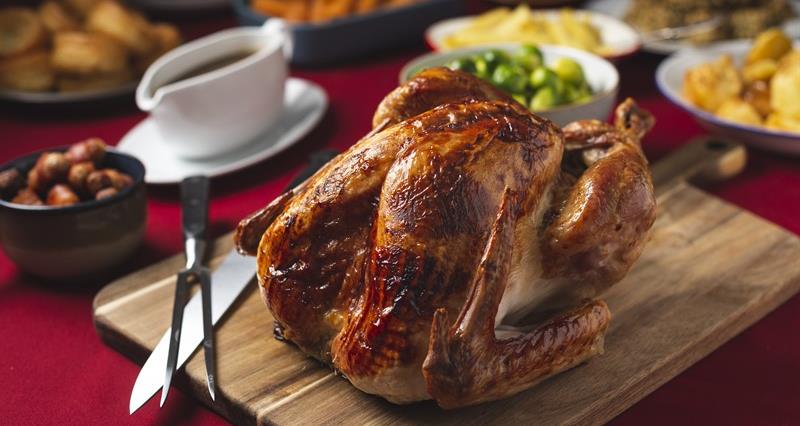It was great to once again welcome seasonal poultry producers of all scales and sizes to the NFU’s annual turkey marketing meetings.
Five meetings took place across England, which included updates on the feed market and nutrition, consumer insights, costs of production, and other practical information to help producers get the most from their turkey business.
Of course, arguably the most important element of the meetings was the opportunity for attendees to meet and socialise with other seasonal poultry producers. By coming together and sharing stories and insights I think all delegates can gain something to take back to their own businesses.
The NFU shared seasonal turkey cost of production at the meetings (see table below), indicating that the overall costings a 5.5kg whole turkey has increased by approximately 3.5% compared to 2023.
Price changes
| Costs Components | 2023 | 2024 | % change y-on-y |
| Feed costs (a) | £15.99 | £16.00 | +0.1% |
| Poult | £5.47 | £5.65 | +3.3% |
| Brood | £0.68 | £0.70 | +2.9% |
| Farming costs (b) | £4.67 | £4.86 | +4.1% |
| Pluck (c) | £3.43 | £3.77 | +9.9% |
| EV (c) | £3.60 | £3.95 | +9.7% |
| Packaging costs (d) | £2.29 | £2.50 | +9.2% |
| Distribution costs | £1.11 | £1.16 | +4.5% |
| Overheads e) | £10.76 | £11.10 | +3.2% |
| Waste removal | £0.06 | £0.06 | 0.0% |
| Total Turkey | £48.06 | £49.75 | +3.5% |
It is important to note that these are indicative costings only and that there will be significant differences between businesses depending on factors such as scale or when key inputs like feed and energy have been booked.
Cost of labour
Labour costs reflected in the pluck and EV saw the highest increases this year at almost 10%, thanks to the annual increase in NLW (National Living Wage) and National Insurance contributions.
Some producers may find these costs are even higher, as our calculations do not include any costs associated with using the Seasonal Poultry Worker Visa Scheme.
It’s also likely that competition for seasonal workers means that many producers will be paying significantly more than the NLW.
Demand on the up
There was a note of cautious optimism at the meetings, following a good Christmas in 2023 which felt more like a return to ‘normal’ demand and operations following the disruption caused by Covid-19 followed by avian influenza in recent years.
Many producers reported holding firm or modest increases in production and felt demand remained strong from existing customers.
Insights from Kantar indicate that consumers remain value-focused which may continue to provide opportunities for whole turkeys, as they often provide the best value for money at the Christmas dinner table.
Import threat
One of the concerns discussed widely at the meetings was the ongoing threat posed by imported turkey cuts such as crowns and butterflies undercutting British produce, and the potential for consumers to assume the imported cuts are British if they are not labelled as such on the butchers’ counter.
One of our key messages in this year’s #BuyMyTurkey campaign will be urging members of the public to look for the union flag and to ask their butcher where their turkey is from when shopping for their Christmas dinner.
A big thank you to Kelly Turkeys, Fosse Meadows, ForFarmers and Massey Feeds, without whose generous support these meetings would not be possible.
All that remains is for me to wish you all a good Christmas marketing season.



